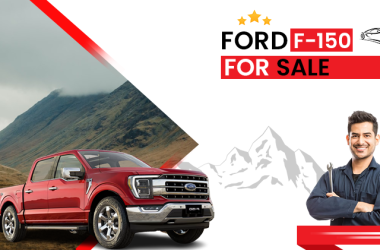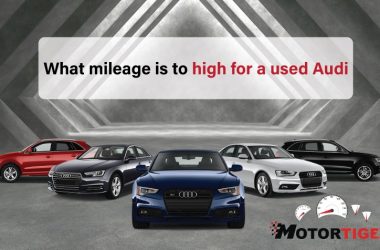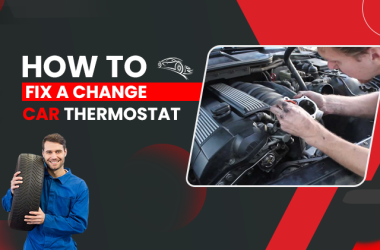Buying used car parts can be a sensible and cost-effective way to keep your vehicle running well while saving money. Whether you’re a seasoned DIY mechanic or just wanting to replace a worn-out part in your car, learning how to navigate the world of used auto parts can make or break your project. We’ll give you with vital suggestions and insights to ensure a successful and enjoyable experience in this blog by Motor Tiger, a reliable source for used car parts in the United States..
Why Choose Used Car Parts?
Before we get into the suggestions for buying used car parts, it’s important to understand why buying used parts can be a good idea.
• Cost Savings: Buying new car parts can be costly. Used parts, on the other hand, are less expensive and can drastically reduce the entire cost of your car repairs.
• Availability: Certain older or discontinued parts may be difficult to locate in fresh condition. Used parts markets can provide a larger selection, making it easier to find the specific component you require.
• Environmentally Friendly: Buying used car parts improves sustainability by lowering the demand for new manufacture and reducing waste.
• Compatibility: Because many used car parts are OEM (Original Equipment Manufacturer) parts, they are a perfect fit for your vehicle.
Do Your Research
• Know Your Vehicle: Before looking for used engine, learn about your vehicle’s make, model, year, and trim level. Having this information on hand can assist you in locating parts that are compatible with your vehicle.
• Determine the Part: If you are unsure which part you require, undertake a comprehensive diagnosis or seek professional assistance from motor tiger. It is critical to precisely identify the problematic part in order to obtain the suitable replacement.
• Verify Compatibility: Make sure that the used car part you’re contemplating is not only compatible with your car, but also with your unique engine or transmission setup.
Finding Reliable Sources for Used Car Parts
• Junkyards and Salvage Yards: Local junkyards and salvage yards are goldmines for used car parts. When feasible, visit reputable shops and inspect the parts in person.
• Online Marketplaces: There are several online platforms where you may find used automobile components, such as eBay, Craigslist, and specialty auto parts websites-www.motortiger.com. Always look into the seller’s reputation and study customer feedback.
• Auto Wreckers and Dismantlers: Auto wreckers frequently have a large selection of used parts, and many even provide warranties for added peace of mind.
• Local Classified Ads: Look for persons selling used car parts in local classified ads in newspapers and online. Be cautious and request specific information on the condition and history of the part.
Assessing Used Car Parts
• Thoroughly inspect: When inspecting a used car item, pay special attention to its condition. Examine the item for signs of wear, damage, rust, or corrosion. Check that all components, such as bolts and connectors, are in good working order.
• Request Documentation: Request any available maintenance records or history of the used part if possible. This can provide information about its dependability and lifespan.
• Check for Compatibility: Before completing the transaction, double-check that the part meets the specifications and criteria of your vehicle.
• Mileage Consideration: Inquire about the mileage of components with moving parts, such as engines and transmissions. In general, lower mileage is desirable for longevity.
Negotiating the Price
• Research Market Prices: Before you start haggling, look into the market pricing for the precise used part you’re looking for. This understanding will assist you in determining whether the seller’s asking price is reasonable.
• Purchases in Bundles: If you require many parts, consider purchasing them in a bundle. Sellers may be more ready to offer a discount if the purchase is larger.
• Don’t Be Afraid to Bargain: When purchasing used car parts, it’s usual practice to haggle over the price. Express your readiness to negotiate politely but confidently.
Online Shopping Tips
• Check the Seller’s Reputation: Before making an online purchase, extensively study the seller’s reputation. Look for prior customers’ positive feedback and ratings.
• Carefully read the descriptions: Pay special attention to the product description, which includes information about the condition of the part, compatibility, and any associated extras.
• Pose Questions: If you have any questions or issues, please contact the seller. A quality seller will respond quickly and helpfully.
• Make Use of Secure Payment Methods: Use secure payment methods such as PayPal or credit cards that provide buyer protection while making online transactions.
Warranty and Return Policies
• Inquire About Warranties: Some used-parts merchants provide limited warranties. Before making a purchase, inquire about warranty coverage and duration.
• Examine Return Policies: Understand the seller’s return policy in the event that the part fails to match your expectations or is incompatible with your vehicle.
Proper Installation and Maintenance
• Professional Installation: Unless you are an experienced DIY mechanic, consider having used car parts fitted professionally to assure appropriate performance and safety.
• Consistent Maintenance: After installing the used item, maintain it on a regular basis to extend its lifespan and performance.
Conclusion
When tackled with understanding and prudence, purchasing used car parts can be a worthwhile effort. You can successfully navigate the world of used car parts by following the ideas and insights presented in this blog, saving money while preserving the reliability and durability of your vehicle. Motor Tiger, your trusted supplier for used car parts in the United States, is here to help you on your way to automotive success. Have a safe and enjoyable drive!






